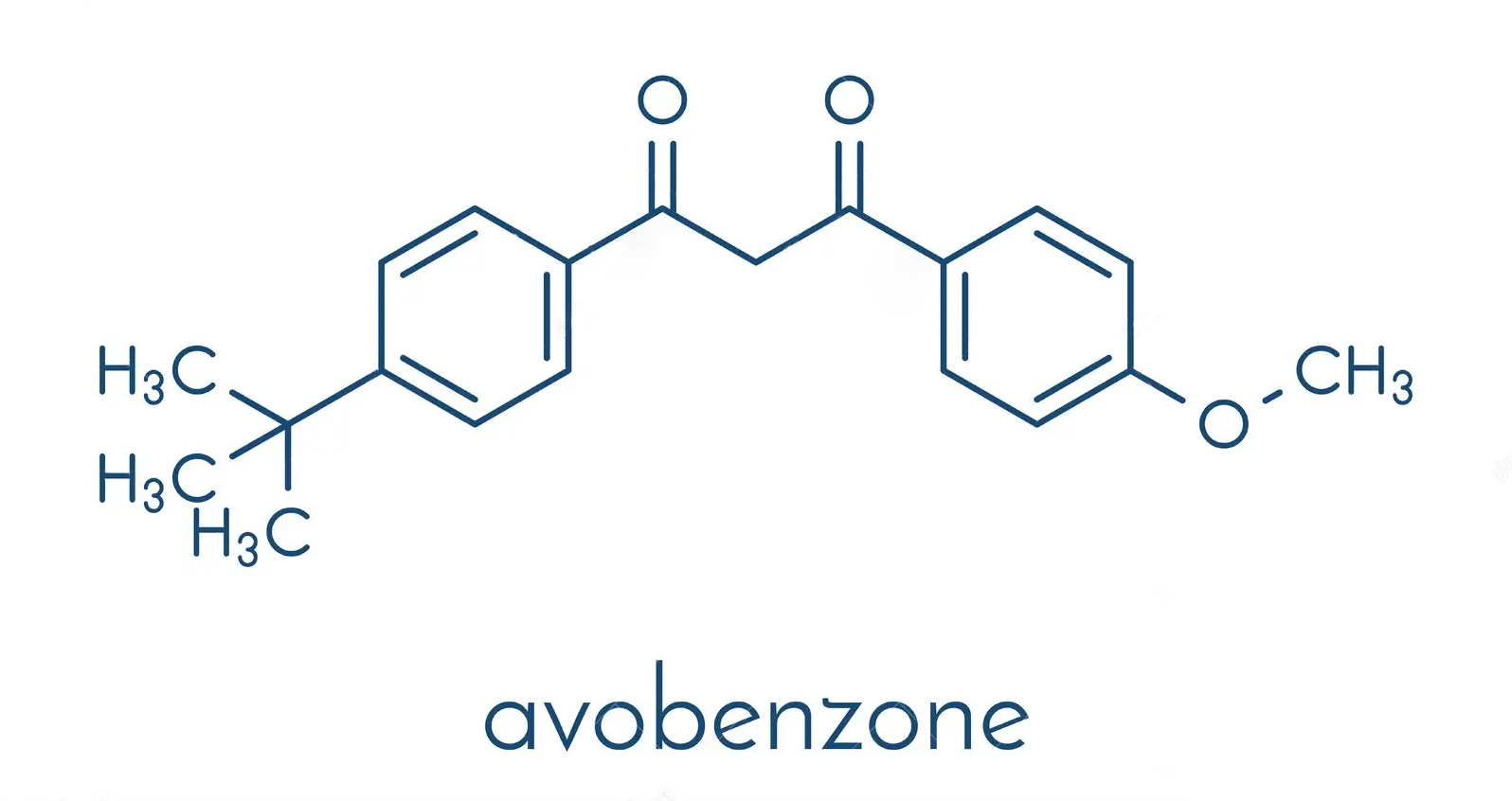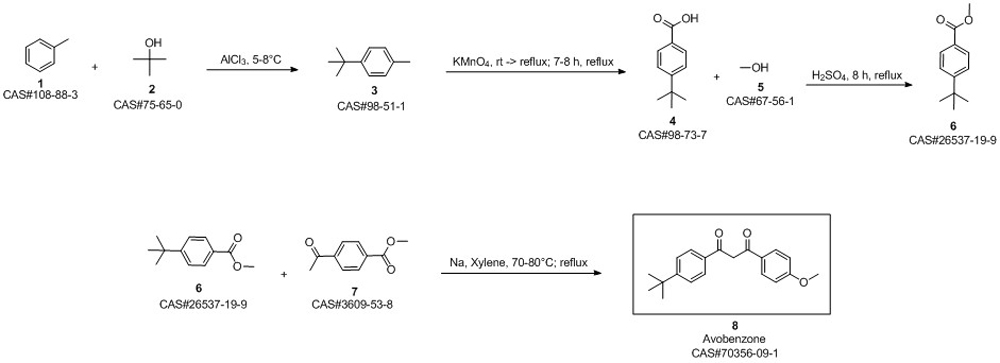Avobenzone is a broad-spectrum sunscreen agent, primarily used to absorb ultraviolet (UV) radiation, particularly UVA rays, to protect the skin from sun damage. It is commonly included in sunscreen formulations. Here’s a general method for preparing Avobenzone in cosmetic formulations:
Ingredients:
- Avobenzone (active ingredient)
- Emollients (for example, caprylic/capric triglyceride, dimethicone, or cyclopentasiloxane)
- Emulsifiers (e.g., Polysorbate 80, PEG-100 stearate)
- Antioxidants (e.g., Vitamin E or Butylated HydroxyToluene (BHT) to prevent degradation)
- Water phase (e.g., distilled water)
- Thickeners (e.g., xanthan gum, carbomer)
- Preservatives (e.g., phenoxyethanol)

Procedure:
1.Phase 1: Oil Phase Preparation
- In a heat-resistant container, combine the emollients, Avobenzone, and any oil-soluble ingredients. This mixture should be heated gently (typically to about 70–75°C) to allow the Avobenzone to dissolve fully and to help disperse the active ingredient uniformly.
2.Phase 2: Water Phase Preparation
- In a separate container, mix the water-soluble ingredients (water, emulsifiers, thickeners, and any water-soluble preservatives). Heat this phase to around 70°C as well to facilitate the formation of an emulsion.
3.Phase 3: Emulsification
- Slowly add the oil phase to the water phase while stirring constantly, usually with a high-shear mixer or homogenizer. This helps to form a stable emulsion that incorporates the Avobenzone uniformly into the formulation.
4.Phase 4: Cooling & Addition of Sensitive Ingredients
- Allow the mixture to cool to room temperature. Once cooled, add any heat-sensitive ingredients, such as antioxidants, additional preservatives, or fragrance.
5.Phase 5: Final Mixing
- Ensure that all ingredients are well integrated, then adjust the pH of the formulation if necessary, typically between 5–7, depending on the specific formulation and skin compatibility.
6.Packaging:
Once the formulation is homogeneous and has cooled, package it in appropriate containers (such as airless pumps or tubes) to protect it from light and air, which can degrade Avobenzone.

Important Notes:
- Stability: Avobenzone is known to degrade in the presence of sunlight and air. To ensure stability, antioxidant agents such as Vitamin E or BHT are often included.
- Formulation Concerns: Avobenzone is sensitive to the pH of the formulation. Ideally, it should be in a slightly acidic environment for optimal stability.
- UV Filters Compatibility: In formulations with other UV filters, like octinoxate or octocrylene, special care is required to prevent Avobenzone from degrading.
Let me know if you need a more specific or detailed procedure depending on the type of product (e.g., sunscreen lotion, gel, or cream).
